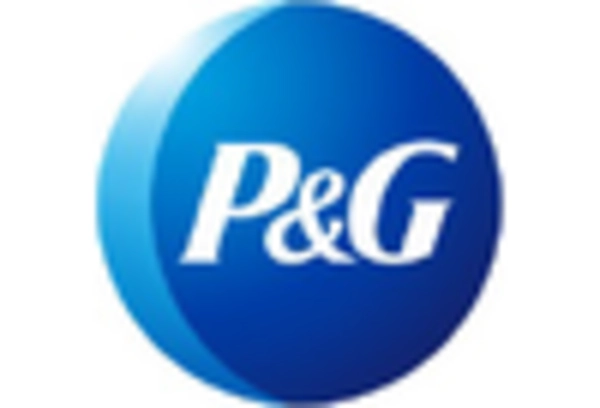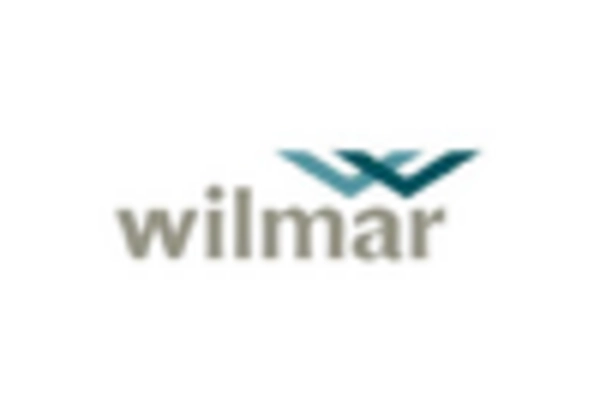Innovations in Production Technologies
Innovations in production technologies are significantly influencing the Specialty Oleochemicals Market. Advances in processing methods, such as enzymatic and biotechnological approaches, are enhancing the efficiency and sustainability of oleochemical production. These innovations not only reduce waste and energy consumption but also improve the quality of the end products. As a result, manufacturers are increasingly adopting these technologies to remain competitive in a market that is becoming more focused on sustainability. The introduction of novel production techniques is likely to expand the range of applications for specialty oleochemicals, further driving growth in the industry. This trend suggests a promising future for the Specialty Oleochemicals Market as it adapts to technological advancements.
Rising Demand for Biodegradable Products
The Specialty Oleochemicals Market is experiencing a notable increase in demand for biodegradable products. This trend is largely driven by heightened consumer awareness regarding environmental sustainability and the adverse effects of synthetic chemicals. As industries such as packaging, personal care, and food service seek eco-friendly alternatives, the demand for oleochemicals derived from natural sources is expected to rise. Reports indicate that the market for biodegradable plastics, which often utilize oleochemicals, is projected to grow significantly, potentially reaching a valuation of several billion dollars in the coming years. This shift towards sustainable materials is likely to bolster the Specialty Oleochemicals Market, as manufacturers adapt to meet the evolving preferences of environmentally conscious consumers.
Expanding Applications in Industrial Sectors
The Specialty Oleochemicals Market is witnessing an expansion of applications across various industrial sectors. Industries such as automotive, textiles, and construction are increasingly incorporating oleochemicals into their processes and products. For example, oleochemicals are being utilized in the formulation of lubricants, surfactants, and coatings, which are essential for enhancing product performance. The versatility of specialty oleochemicals allows for their use in a wide range of applications, which is likely to drive market growth. As industries continue to seek sustainable and efficient solutions, the Specialty Oleochemicals Market is expected to thrive, capitalizing on the diverse needs of various sectors.
Growth in Personal Care and Cosmetics Sector
The Specialty Oleochemicals Market is poised for growth, particularly due to the expanding personal care and cosmetics sector. With an increasing number of consumers prioritizing natural and organic ingredients, oleochemicals derived from renewable resources are becoming essential components in formulations. The market for personal care products is anticipated to witness substantial growth, with estimates suggesting a compound annual growth rate that could exceed 5% over the next few years. This trend is likely to drive the demand for specialty oleochemicals, as manufacturers strive to create products that align with consumer preferences for sustainability and safety. Consequently, the Specialty Oleochemicals Market stands to benefit from this burgeoning sector.
Increasing Regulatory Support for Sustainable Practices
The Specialty Oleochemicals Market is benefiting from increasing regulatory support for sustainable practices. Governments and regulatory bodies are implementing policies that encourage the use of renewable resources and the reduction of carbon footprints. This regulatory environment is fostering a shift towards oleochemicals as viable alternatives to petroleum-based products. For instance, initiatives aimed at reducing plastic waste are likely to promote the use of biodegradable oleochemicals in various applications. As regulations become more stringent, companies within the Specialty Oleochemicals Market may find new opportunities to innovate and expand their product offerings, aligning with both regulatory requirements and consumer expectations.

















Leave a Comment